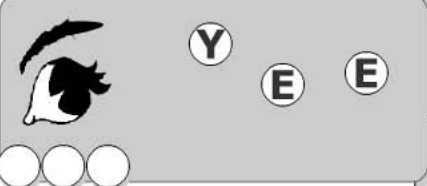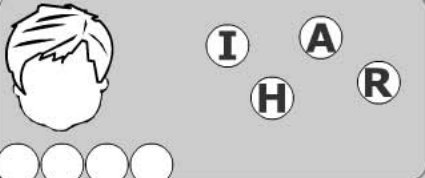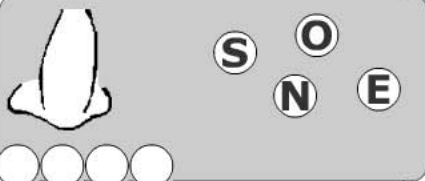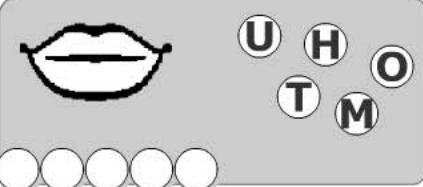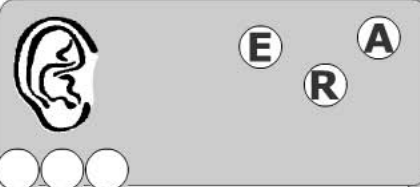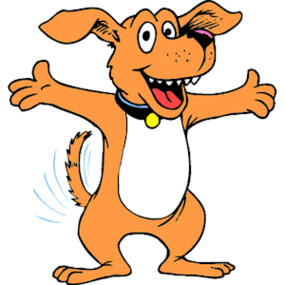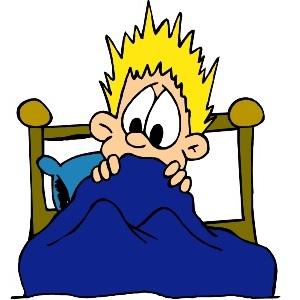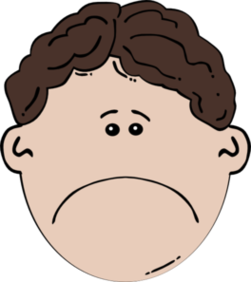Super Minds 2 Unit 6 Vocabulary & Grammar
(46).webp)
- 1.
Read, choose and write the correct word. I'm Jill. Me / My birthday is in May.
Explanation
The word "my" is used to indicate possession or ownership. In the sentence, "My birthday is in May," the speaker is referring to their own birthday. The word "My" is capitalized because it is the first word in the sentence. The word "MY" is written in all capital letters for emphasis or to convey strong ownership.Rate this question:
- 2.
Read, choose and write the correct word.It's Lucy and Alex. Their / Her birthdays are in March.
Explanation
The correct answer is "their, Their, THEIR" because the sentence is referring to the birthdays of both Lucy and Alex. Since they are two different people, the pronoun "their" is used to indicate possession for both of them. The variations in capitalization (Their, THEIR) are likely due to emphasis or stylistic choice.Rate this question:
- 3.
Read, choose and write the correct word.We're Kate and Jim. Our / Their birthdays are in October.
Explanation
The correct answer is "our, Our, OUR" because the sentence is referring to the birthdays of Kate and Jim, who are the speakers. Therefore, the possessive pronoun "our" is used to indicate that the birthdays belong to them. The variations in capitalization ("Our" and "OUR") are likely due to different formatting or emphasis.Rate this question:
- 4.
Read, choose and write the correct word.Mike is my brother. His / Our birthday is in December.
Explanation
The correct answer is "his, His, HIS" because the sentence is referring to Mike's birthday. In the first instance, "his" is used to show possession, indicating that the birthday belongs to Mike. In the second instance, "His" is used at the beginning of the sentence to start a new sentence and emphasize that it is Mike's birthday. In the third instance, "HIS" is written in all capital letters to further emphasize that it is Mike's birthday.Rate this question:
- 5.
Look at the picture. Look at the letters. Write the word.
Explanation
The correct answer is "eye, Eye, EYE" because the word "eye" is spelled in three different ways, with the first letter being lowercase, then uppercase, and finally in all uppercase. The picture and the given letters do not provide any additional information or context to suggest any other word.Rate this question:
- 6.
Look at the picture. Look at the letters. Write the word.
Explanation
The correct answer is "hair, Hair, HAIR" because the picture is showing a representation of hair, and the letters are written in different capitalizations to emphasize the word. The word "hair" is repeated three times, with each instance using a different capitalization.Rate this question:
- 7.
Look at the picture. Look at the letters. Write the word.
Explanation
The correct answer is "nose, Nose, NOSE" because the picture is not provided, so we cannot determine any visual cues or context that might suggest a different word. Additionally, the variations in capitalization suggest that the word is being repeated with different letter cases for emphasis or distinction.Rate this question:
- 8.
Look at the picture. Look at the letters. Write the word.
Explanation
The correct answer is "mouth, Mouth, MOUTH" because the word in the picture is "mouth" and it is written in different capitalization styles to emphasize the word. The repetition of the word in different capitalization styles suggests that it is important and should be written exactly as shown.Rate this question:
- 9.
Look at the picture. Look at the letters. Write the word.
Explanation
The correct answer is "ear, Ear, EAR" because the picture is not provided and the question only asks to look at the letters and write the word. The word "ear" can be written in different cases, such as lowercase "ear", capitalized "Ear", or in all uppercase "EAR".Rate this question:
- 10.
Is this sentence true or false?This dog is scared.
- A.
True
- B.
False
Correct Answer
B. FalseExplanation
The sentence states "This dog is scared." The word "scared" indicates a feeling of fear or anxiety. Since we cannot determine the emotional state of the dog based solely on the given sentence, we cannot conclude that the sentence is true. Therefore, the correct answer is false.Rate this question:
-
- 11.
Is this sentence true or false?Bill is angry.
- A.
True
- B.
False
Correct Answer
A. TrueExplanation
The given sentence is a statement that claims "Bill is angry." It does not provide any context or additional information to suggest whether the statement is true or false. Therefore, without any further details, it is impossible to determine the accuracy of the statement.Rate this question:
-
- 12.
Is this sentence true or false?Sam is tired.
- A.
True
- B.
False
Correct Answer
B. FalseExplanation
The given sentence states that "Sam is tired." Since the answer is "False," it means that the sentence is not true, indicating that Sam is not tired.Rate this question:
-
- 13.
Is this sentence true or false?John is sad.
- A.
True
- B.
False
Correct Answer
A. TrueExplanation
The given sentence "John is sad" is being stated as true. This means that the sentence is accurate and portrays John's emotional state as being sad.Rate this question:
-
- 14.
Read this. Choose the word.1)
- A.
Happy
- B.
Toy
- C.
Bedroom
- D.
Glasses
- E.
Chin
- F.
Cheeks
Correct Answer
B. ToyExplanation
The word "toy" is the only option that is related to play or amusement. The other words do not have any direct connection to the concept of toys.Rate this question:
-
- 15.
5)
- A.
Happy
- B.
Toy
- C.
Bedroom
- D.
Glasses
- E.
Chin
- F.
Cheeks
Correct Answer
A. Happy -
- 16.
4)
- A.
Happy
- B.
Toy
- C.
Bedroom
- D.
Glasses
- E.
Chin
- F.
Cheeks
Correct Answer
C. BedroomExplanation
The given words "happy," "toy," "bedroom," "glasses," "chin," and "cheeks" are all unrelated except for the word "bedroom." The other words do not have any clear connection or common theme, while "bedroom" stands out as a word related to living spaces or furniture.Rate this question:
-
- 17.
3)
- A.
Happy
- B.
Toy
- C.
Bedroom
- D.
Glasses
- E.
Chin
- F.
Cheeks
Correct Answer
E. ChinExplanation
The given words are all associated with different body parts or objects, except for "chin" which is a body part. "Happy" is an emotion, "toy" is an object, "bedroom" is a location, "glasses" are an accessory, and "cheeks" are body parts. Therefore, "chin" is the odd one out as it is the only body part mentioned.Rate this question:
-
- 18.
2)
- A.
Happy
- B.
Toy
- C.
Bedroom
- D.
Glasses
- E.
Chin
- F.
Cheeks
Correct Answer
F. CheeksExplanation
The given words are all related to parts of the face. "Cheeks" is the correct answer because it is the only word that specifically refers to a facial feature. "Happy," "toy," "bedroom," "glasses," "chin" are not related to parts of the face.Rate this question:
-
Quiz Review Timeline +
Our quizzes are rigorously reviewed, monitored and continuously updated by our expert board to maintain accuracy, relevance, and timeliness.
-
Current Version
-
Feb 19, 2025Quiz Edited by
ProProfs Editorial Team -
Feb 21, 2017Quiz Created by
Nadezhda_semenya



